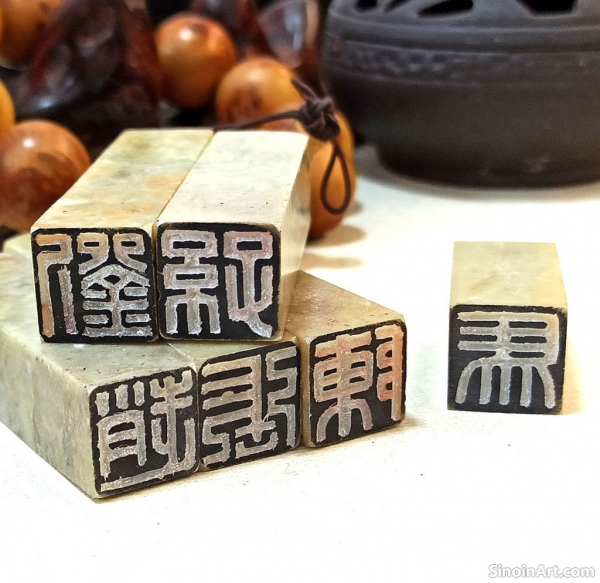Famous Collectors and Their Seal Collections: A Legacy of Connoisseurship
|
The history of art collecting in China is intertwined with the stories of the collectors themselves. Many of the most famous collectors throughout Chinese history have used collector’s seals to mark their collections and leave a lasting legacy of their taste and patronage. Their seal collections reflect both their personal tastes, and their historical context.  Emperor Huizong of the Song Dynasty was a renowned collector and patron of the arts, and his collection included numerous seals which have become highly valuable and important pieces of art. His interest in art greatly influenced art production during the Song dynasty. His collecting habits and approach have also influenced subsequent collectors.  Other notable collectors include Qianlong Emperor of the Qing dynasty, whose collection of calligraphy and paintings was marked with many imperial seals. He is one of the most well known collectors of all time, and his collecting habits greatly influenced art production and appreciation.  Many private collectors, from scholars and merchants to government officials, have also had important collections, each with unique and specific seal collections. These individual collections are valuable sources of information, and have significantly shaped the history of Chinese art. The seals belonging to famous collectors are now highly prized, offering valuable insights into the history of art patronage, cultural taste, and the history of art. The seals themselves have become valuable pieces of art, in addition to serving as markers of provenance for specific works of art. These famous collectors and their seal collections provide a compelling narrative of the history of art collecting in China. Their patronage and connoisseurship shaped the art world for many generations, and continues to influence contemporary tastes and collection practices. Their seal collections are valued not only for their aesthetic appeal, but also for the historical context they provide. |
Tag : Famous Art Collectors, Chinese Art Patrons, Seal Collections, Art History, Seal Legacy
Related information
- Inscriptions on Collector's Seals: Unveiling Taste and Connoisseurship
- Collecting Leisure Seals: Understanding Artistic and Cultural Value
- The World of Collector's Seals: An Introduction to Shoucang Yinzhang
- Learning Seal Carving: A Journey of Patience and Skill
- The Art of the Seal: An Introduction to Chinese Seal Carving
This article delves into the various types of inscriptions found on collector's seals, exploring how they reveal the collector's knowledge, taste, and personal connection to the art they own.
This article offers a guide to collecting leisure seals, with insights on assessing artistic value, understanding the importance of provenance, and navigating the market for these unique objects.
This article introduces the concept of Chinese collector's seals, exploring their historical role, cultural significance, and how they function as marks of ownership and connoisseurship.
This article provides an overview of the different avenues for aspiring seal carvers, including private instruction, formal education, online resources, and the importance of consistent practice.
This article introduces Chinese seal carving, or Zhuanke, as a traditional art form combining calligraphy, carving, and design, highlighting its history, process, and cultural significance.